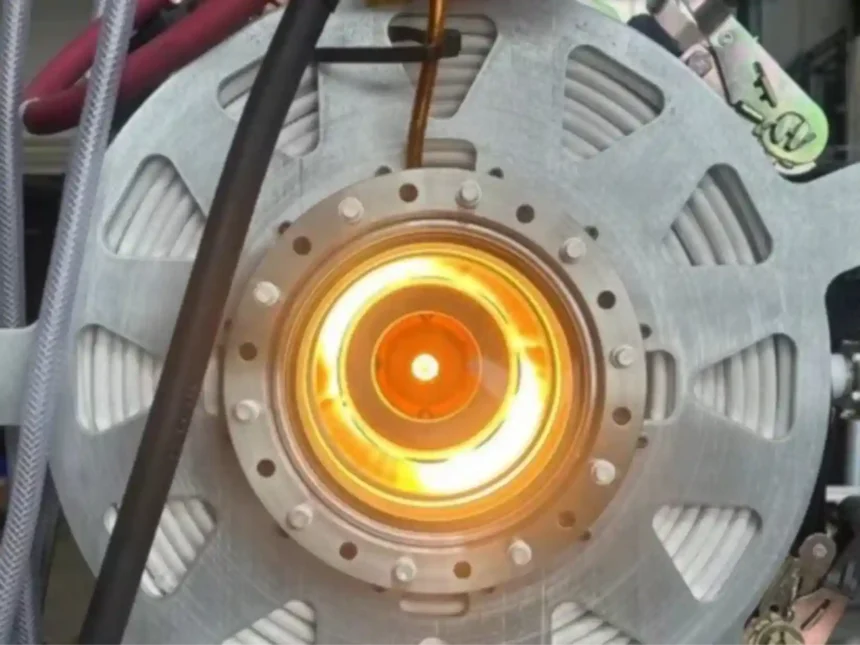Marathon Fusion, a startup based in San Francisco, has announced a method to convert mercury into gold using nuclear fusion technology. This draws from ancient alchemy ideas but applies modern science. Below, I’ll break it down in points covering how they did it, the science behind it, implications, potential problems, and related research.
How They Achieved It
- Core Process: The method uses high-energy neutrons from deuterium-tritium fusion reactions. These neutrons bombard mercury-198 isotopes, turning them into mercury-197, which then decays into stable gold-197 over about 64 hours.
- Fusion Integration: This happens as a side effect in fusion power plants. While the plant generates electricity by fusing hydrogen isotopes into helium, the released neutrons interact with mercury placed nearby.
- Scalability: A one-gigawatt fusion plant could produce up to 5,000 kilograms of gold per year without interfering with energy or fuel production.
- Company Efforts: Founded in 2023 by Adam Rutkowski (ex-SpaceX engineer) and Kyle Schiller (science policy expert), the company started with fusion fuel technologies and expanded to this transmutation idea. They published a scientific paper detailing the process.
Scientific Basis and Research
- Nuclear Transmutation: The technique relies on neutron capture, where mercury-198 absorbs a neutron to become mercury-199, but the paper focuses on direct conversion to mercury-197 leading to gold. This is grounded in nuclear physics, similar to how elements change in particle accelerators.
- Previous Observations: Scientists at CERN in Europe have seen lead turn into tiny amounts of gold during high-energy particle collisions, but Marathon’s approach aims for large-scale production in a fusion reactor setup.
- Paper and Validation: The company released a non-peer-reviewed paper last week. Experts like Dr. Ahmed Diallo from Princeton’s plasma physics lab called it promising, but it needs peer review to confirm reliability.
- Isotope Requirements: Mercury-198 makes up about 10% of natural mercury, so enrichment (separating isotopes) is needed for bigger operations, drawing from established nuclear separation techniques.
Economic and Broader Implications
- Revenue Boost: Gold production could match earnings from electricity sales, potentially doubling a fusion plant’s value and making fusion projects more attractive to investors.
- Fusion Industry Impact: This could speed up fusion energy development by improving economics, leading to cleaner, unlimited power sources with gold as a bonus product.
- Market Changes: Traditional gold mining might face competition, and energy costs could drop if plants generate dual income. Radioactive gold could back financial tools, like tradeable instruments, even if stored in vaults.
- Long-Term Vision: Marathon calls it the “start of a new golden age,” combining energy innovation with precious metal creation, possibly reshaping industries.
Potential Problems and Challenges
- Radioactivity Issue: Some produced gold is radioactive and requires 14 to 18 years of storage before safe use, limiting immediate commercial applications.
- Practical Hurdles: Isotope enrichment for mercury-198 adds complexity and cost to scaling up. The process hasn’t been peer-reviewed, so viability questions remain.
- Safety and Regulation: Handling radioactive materials and fusion reactions involves risks, needing strict oversight. Experts are cautious, emphasizing the need for more testing.
- Economic Risks: While promising, unproven tech could face delays or failures, and gold market fluctuations might affect projected $600 million annual value per gigawatt.
This breakthrough blends cutting-edge fusion with economic incentives, but it will need more validation to become reality. The fusion field is watching closely as companies like Marathon push boundaries.







